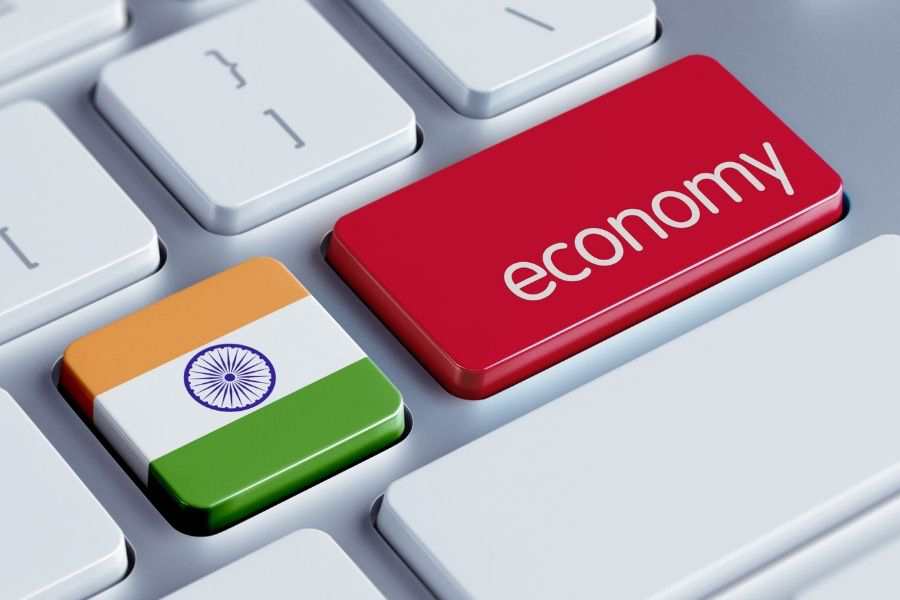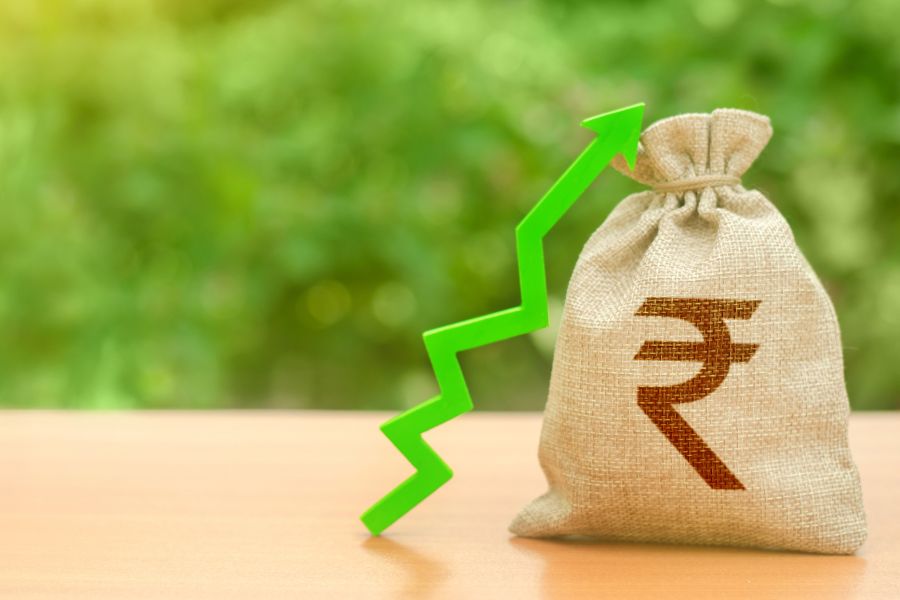A decisive phase for the Indian economy
India is the fifth largest economy in the world and it is growing at the pace that no other country can match. Growth during 2022-23 was projected to be 6.6%. The World Bank forecasted India’s growth at 6.9% and the IMF’s World Economic Outlook projected it at 6.8%. It is indeed noteworthy that India has performed extremely well post-pandemic, especially when the majority of economies around the world are struggling.

Image credit: Shutterstock
Economic development for any country, developed or poor, is a roller-coaster ride. During this journey every elevation is often followed by a steep slope and inversions formed by lack of vision, misgovernance, poor infrastructure, mismanagement of human capital, political instability, catastrophe like war, natural disaster, pandemic, etc.
Over the years, efforts have been made to develop strong fundamentals for India at the level of macroeconomics, rather than leaning entirely towards a purely capitalist or socialist economy. Strong economic fundamentals coupled with a rise in domestic demand and a systematic increase in capital expenditure in successive budgets helped the Indian economy remain resilient to various factors. Similarly, the contribution of Five Year Plans in developing a robust base for the economy cannot be ignored.
In 1991, India was facing the worst economic crisis ever. Forex reserves were at an all-time low due to multiple issues related to sharp increase in oil prices, decline in remittances from Indians working abroad, double digit inflation, weak fiscal deficit, foreign debts and unsuccessful implementation of various government policies/schemes. The then government took very bold yet politically difficult economic measures to bring the country’s economy on the path of prosperity.
Government cautiously took several bold measures to prevent sovereign default, such as devaluation of rupee (rupee was devalued by 20%, – 9%+11% to make the exports more competitive), pledged gold holdings to Bank of England, United Bank of Switzerland, emergency loan of around US$ 2 billion from IMF, etc. to raise sufficient funds. Government’s focus was very clear on ‘liberalisation’, ‘privatization’ and ‘globalization’ to make India a major player in the global economy.
The government’s determination to institutionalise reforms yielded desired results and changed the face of the economy in India. In line with the reforms, the government also went ahead with the new Industrial Policy and abolished licensing for all industries barring 18, irrespective of level of investment. This somewhat put an end to the License Raj. Government further relaxed many provisions of the Restrictive Trade Practices Act to restructure the businesses by facilitating mergers, restricting public sector monopoly to certain sectors of national security, and a policy of automatic approval for foreign direct investment up to 51%.
Government made several changes in the Industrial Policy for ‘Ease of Doing Business’ to provide a viable business environment that encouraged a host of multinational companies and FIIs to enter the Indian market. Many Indian companies also got the opportunity to sign collaboration agreements and joint ventures with foreign companies.
India needed new technologies for its industries to produce quality products and foreign investment to get out of the shoddy economic condition. The government introduced Structural Reforms that helped the Indian economy to integrate with the global economy through trade, investment and the latest technologies. They created a conducive business environment, where foreign companies could collaborate with Indian companies. It was a win-win situation for both. With these reforms, India has emerged as one of the fastest growing economies.
While India needed foreign investors and companies from developed nations to strengthen its economy, foreign companies also needed the Indian market, where they could invest and sell advanced technology, heavy & medium machinery, defence products, conventional and commercial products. After all, India is the second largest consumer market in the world. Many multinational companies were eager to enter the Indian market, the announcement of economic reforms made their presence in India possible. Several multinational companies entered the Indian market with short-term and long-term business plans.
At the same time, government persisted with radical changes in other policies and constituted two committees; one for Financial Sector Reforms and other for Tax Reforms. Several policy measures were amended to create a trade policy framework to boost exports. Incentive packages were announced for companies to contribute in enhancing exports, which in long run helped the Indian economy to recover from the crisis.
Government raised corporate tax by 5 percentage points, introduced deduction of tax at source for some financial transactions, reduced subsidy and increased prices of cooking gas cylinders, fertilisers and petrol, removed subsidy on sugar, and relaxed rules for investment by non-residents. Businesses and people were given immunity from prosecution who declared their unaccounted wealth. This was a practical step to bring such businesses back into the mainstream. In addition, government decreased customs duty from 200% to 65%, corporate income tax lowered by -5% to 46%, and personal income tax was also reduced to 40%.
These reforms transformed the Indian economy. Today’s dynamism and sustained growth of the Indian economy are the result of the strong foundation laid by the austerity measures undertaken during 1991, which opened up the economy and made it globalized. The Indian economy emerged as one of the fastest growing economies in the world with a vibrant private sector, a robust financial sector and growing spending-driven middle class. And in the current economic context where countries are eager to pursue a China+1 strategy, India has once again emerged as a potential bright spot. However, there are still challenges such as poverty, inequality, environment sustainability and issues that crop up for failure or non-implementation of schemes announced in successive budgets. Nevertheless, investment and latest technology in key industries are still the need of the hour for the Indian economy to keep the growth momentum.
The author is Consultant – International Division, Trade Promotion Council of India. Views expressed are personal.













Very informative article
Excellent article!